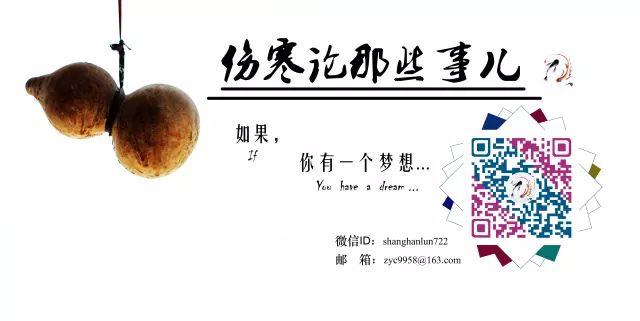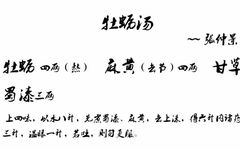
Fourth Section on the Pulse and Symptoms of Malaria

Additional Formulas
Mu Li Tang (Oyster Decoction). Treats Mu Malaria.
Chai Hu Qu Ban Xia Jia Gua Lou Tang (Bupleurum Decoction to Remove Pinellia with Added Trichosanthes Root). Treats malaria with thirst, also treats labor malaria.
Chai Hu Gui Jiang Tang (Bupleurum and Cinnamon Decoction). Treats malaria with more cold and slight heat, or just cold without heat. Taking one dose is miraculous.
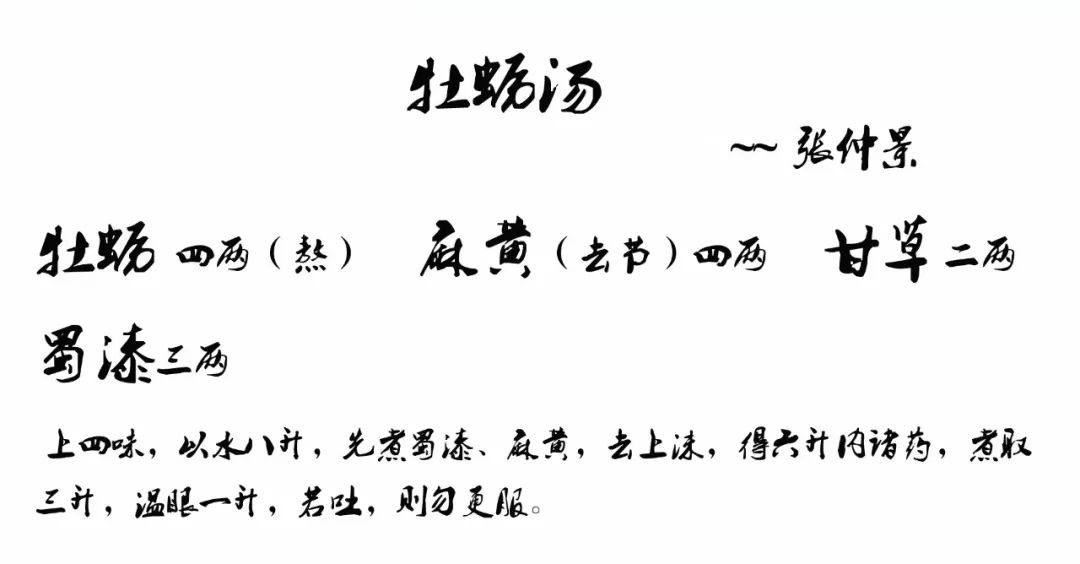
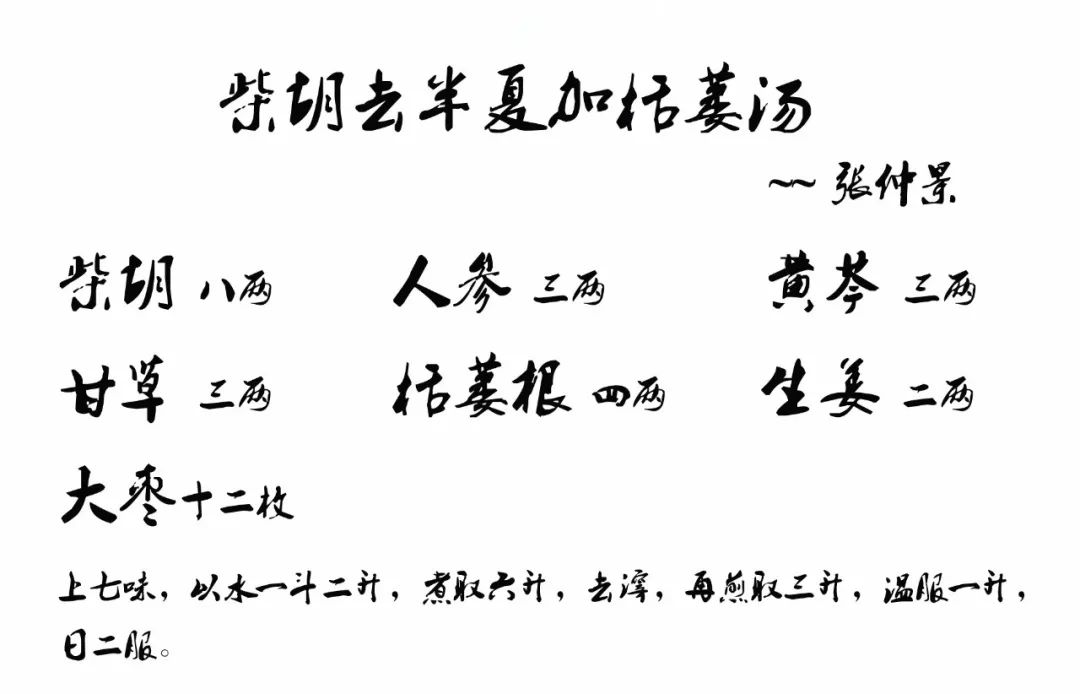
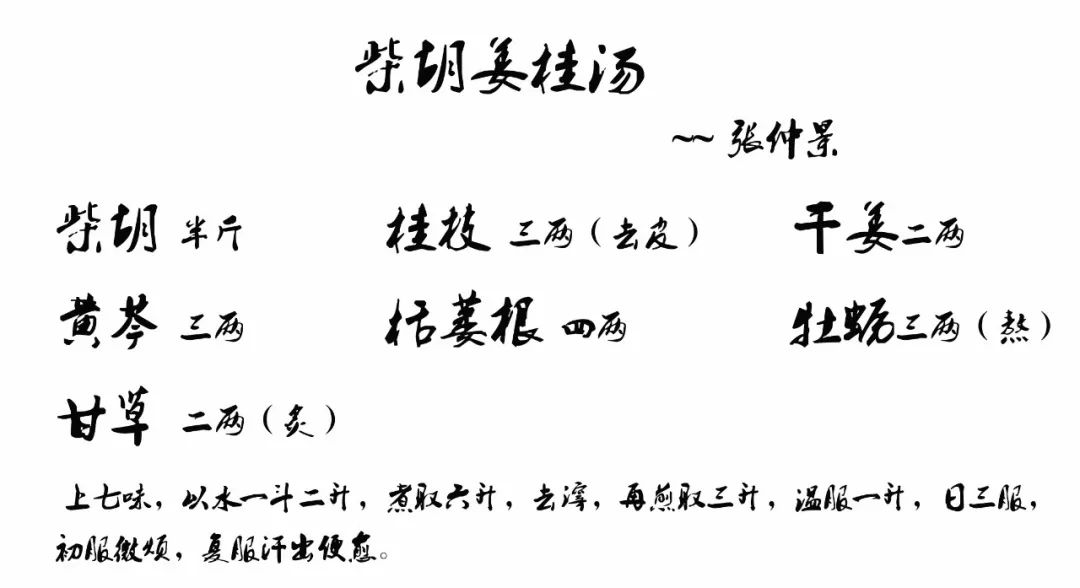
Introduction: The editor of the “Essential Prescriptions from the Golden Cabinet” has categorized the content according to the methods outlined in Liu Duozhou’s commentary on the text. The annotations primarily reference works from the Qing Dynasty and modern medical practitioners. Due to personal understanding limitations, some biases may exist; readers are encouraged to extract the essence and discard the dross, integrating it with clinical practice and focusing on personal comprehension. Comments and contributions of renowned discussions or personal annotations are welcome!

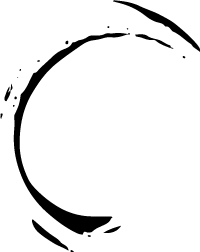
Qing Dynasty · You Yi’s “Heart Classics of the Essential Prescriptions from the Golden Cabinet”
Mu Li Tang (Oyster Decoction)
According to this, it is attached by Song’s Sun Qi and others, which also implies the intention of the Shu Qi San, but its external attacking power is relatively strong. Zhao’s commentary states: “Mu Li softens hardness and dissipates masses; Ma Huang not only disperses cold but also can promote Yang Qi to flow outward, allowing the masses to disperse and the disease to heal itself.”
Chai Hu Qu Ban Xia Jia Gua Lou Gen Tang
Chai Hu Gui Jiang Tang
Zhao’s commentary states: “This is similar to Mu Malaria but is not the same; Mu Malaria’s evil resides in the heart below, while this is wind-cold-damp obstructing the muscle surface. When the muscle surface is obstructed, Yang Qi cannot flow outward, thus it becomes stagnant within the Ying and blood. Yang Qi transforms into heat, blood stagnates and forms clots, which settle in that area. When the Wei Qi moves Yang at twenty-five degrees, the disease manifests. The evil entering the Ying has no outward force, and the Ying, being originally obstructed, does not exit and contends with Yang, hence there is slight heat or no heat. Therefore, Chai Hu is used as the monarch to release the stagnant Yang, Huang Qin as the minister to clear the heat in the half, Gui Zhi and Gan Jiang to disperse the muscle surface obstruction, Gua Lou Gen and Mu Li to eliminate residual heat and dissipate blood clots, and Gan Cao to harmonize the various herbs, adjusting Yin and Yang. If sweating occurs, the obstructive evil disperses, blood heat circulates, and the disease is cured.


Qing Dynasty · Shen Mingzong’s “Zhang Zhongjing’s Essential Prescriptions from the Golden Cabinet”
Mu Li Tang, treats Mu Malaria.
Mu Malaria, as mentioned by Zhongjing, refers to malaria with more cold. Due to the abundance of Wei evil, it prevents the subtle evil from exiting the Ying, hence there is more cold and less heat. Therefore, Mu Li is used to gather Yin and nourish the upright to intercept malaria, Gan Cao harmonizes the middle, and Ma Huang promotes sweating to open Yang, driving out the evil from the Ying, while Shu Qi expels the heat from the upper Wei, deeply understanding Zhongjing’s intention, hence it is included for reference.
Chai Hu Qu Ban Xia Jia Gua Lou Gen Tang, treats malaria with thirst, also treats labor malaria.
The Xiao Chai Hu Tang is a formula that resolves both Yin and Yang. Malaria is a condition where both Ying and Wei are affected by wind-cold, hence it is used to resolve both. I believe adding Chuanxiong and Angelica to drive out the evil from the Ying is particularly effective. If malaria presents with thirst, the wood-fire is invading the stomach, consuming body fluids, hence removing Ban Xia’s dryness and adding Gua Lou Gen to clear heat and generate fluids to stop thirst, thus harmonizing Ying and Wei, and malaria will naturally resolve. Labor malaria must be due to disturbance of Ying and Wei disharmony, hence this formula also treats it.
Chai Hu Gui Jiang Tang, treats malaria with more cold and slight heat, or just cold without heat. Taking one dose is miraculous.
More cold with slight heat also represents a three-seven, two-eight division. When Wei evil enters Ying, it is cold, and Ying evil follows Wei Qi moving Yang, hence heat arises. This indicates that Wei evil is more and Ying evil is less, with Wei being solidly obstructed, and the subtle evil in Ying cannot exit to contend with Wei Qi for heat, hence more cold and slight heat. If Wei evil is excessive, Ying evil cannot exit at all, resulting in just cold without heat. The formula uses Chai Hu, Gui Zhi, and Gan Cao to drive out the evil from the Wei, Huang Qin, Ban Xia, and Gua Lou Gen to clear heat and transform phlegm, harmonizing the internal Qi, Gan Jiang to warm and disperse the subtle cold in Ying blood, and Mu Li to break the hard masses and benefit true Yin. When sweating occurs, the Wei evil naturally departs, and the malaria is suddenly eliminated, hence taking one dose is miraculous.


Liu Duozhou’s “Commentary on the Essential Prescriptions from the Golden Cabinet”
Mu Li Tang treats Mu Malaria.
This formula is particularly noted by Jing Yun: This is attached by Song’s Sun Qi and others, which also implies the intention of the Shu Qi San, but its external attacking power is relatively strong. Zhao’s commentary states: “Mu Li softens hardness and dissipates masses; Ma Huang not only disperses cold but also can promote Yang Qi to flow outward, allowing the masses to disperse and the disease to heal itself.”
Chai Hu Qu Ban Xia Jia Gua Lou Tang treats malaria with thirst, also treats labor malaria.
This section discusses the use of Chai Hu Qu Ban Xia Jia Gua Lou Gen Tang to easily treat malaria with thirst and labor malaria that has not healed for a long time. Xu Zhongke believes: “The malaria evil is also in the half exterior and interior, hence entering and contending with Yin causes cold, exiting and contending with Yang causes heat, this is the manifestation of Shao Yang… Therefore, Xiao Chai Hu is also the main formula for treating malaria. Thirst is treated by replacing Ban Xia with Gua Lou Gen, which is also the method of treating Shao Yang. Both attacking and tonifying are applied, hence it is also the main treatment for labor malaria.” In this formula, Chai Hu and Huang Qin harmonize Shao Yang, while expelling evil and clearing heat. Ren Shen, Gan Cao, Sheng Jiang, and Da Zao tonify the spleen and generate fluids, harmonizing Ying and Wei, protecting the upright and repelling evil; Gua Lou Gen generates fluids and moistens dryness, clearing heat and stopping thirst. Since this formula has the effect of tonifying Qi and Yin, it can also treat long-term unresolved “labor malaria.”
Chai Hu Gui Jiang Tang treats malaria with more cold and slight heat, or just cold without heat. Taking one dose is miraculous.
Patients with malaria, summer injuries from heat, and Ying Yin being damaged, are also related to receiving cool winds in autumn. Both Ying and Wei are injured, and Yin and Yang are out of balance, hence more cold and less heat, or just cold without heat.
Treat with Chai Hu Gui Jiang Tang. Gui Zhi harmonizes the surface of Tai Yang, Gan Jiang warms the interior of Tai Yin, Gua Lou Gen generates fluids and nourishes the liquid, softening hardness and benefiting Yin; Chai Hu promotes the liver and gallbladder to resolve Shao Yang evil; Huang Qin clears the gallbladder to purge the heat of the three burners; Gan Cao harmonizes the middle, adjusting Yin and Yang. After taking this formula, slight vexation is the mechanism of Yang recovering, indicating the medicine has reached the disease. If sweating occurs again, the three burners will be unblocked, Qi will circulate, and fluids will be distributed, leading to self-healing.


Hu Xishu’s “Lectures on the Essential Prescriptions from the Golden Cabinet”
Let’s look below; these are all the corrections made by Lin Yi and others when proofreading the “Essential Prescriptions from the Golden Cabinet”. They felt it was too simplified, so they found references from the “Thousand Gold” and “External Treasury” and attached them here. The first is Mu Li Tang, which is similar to the above Mu Li San, but it does not include Long Gu, instead using Mu Li, which has a similar calming effect. Additionally, they included Ma Huang Gan Cao Tang; if it is a solid exterior without sweating, then for this type of Mu Malaria, this formula must be used; if there is sweating and it is not a solid exterior, then Ma Huang cannot be used, and the above formula must still be used. Both discuss Mu Malaria, which is what we see clinically as having possible sweating or not; we can choose one of these two formulas.
After this formula, it is clearly stated that the four ingredients should be boiled in eight sheng of water, first boiling Shu Qi and Ma Huang, removing the foam, obtaining six sheng, and then boiling the remaining herbs to obtain three sheng, taking one sheng warm. If vomiting occurs, do not take more; this is stated more clearly, this medicine is for vomiting, and if it causes vomiting quickly, do not continue taking it, stop after vomiting. Therefore, the above-mentioned Mu Li San is also a vomiting agent, with Shu Qi as the main herb, which is used to expel water and phlegm; the ancients called it intercepting malaria. Later generations misused this Shu Qi; if there is no stopping phlegm or stopping drinking malaria, this medicine cannot be used. Later, it was used as an intercepting malaria, meaning to stop the malaria, which was quite severe, so they forced vomiting, which could interrupt it; however, this is not the case. Looking at the application of this formula, it is actually expelling drink and water, caused by drink and water leading to cold without heat, which the ancients called Mu Malaria. There are indeed such symptoms, and you can use Shu Qi San or Shu Qi Tang; it depends on whether there is possible sweating or not, and you can use either of these two formulas. If there is no water, this formula cannot be used; what should be used instead? It is still the Chai Hu formula, which is the reasoning. Therefore, later generations only saw this Shu Qi, thinking that vomiting can treat malaria, but did not understand under what circumstances it should be used, leading to misuse of this medicine, which can deplete the person; using it without proper indication is incorrect. This is what Lin Yi and others found in the “External Treasury” regarding this Mu Li Tang.
Next, Chai Hu Qu Ban Xia Jia Gua Lou Tang treats malaria with thirst, also treats labor malaria. Chai Hu Qu Ban Xia Jia Gua Lou Tang is Xiao Chai Hu Tang with Ban Xia removed and Gua Lou added. Ban Xia treats vomiting, while Gua Lou relieves thirst. Therefore, it treats malaria with thirst, which is the Xiao Chai Hu Tang syndrome, not vomiting but thirsty, and this Chai Hu Qu Ban Xia Jia Gua Lou Gen can be used as the main treatment. It also treats labor malaria, which is also due to deficiency, and prolonged unresolved malaria can severely deplete the person; hence Gua Lou Gen is a tonifying herb, which is also evident here. This thirst is not like the Shi Gao syndrome, where thirst is caused by heat; this Gua Lou Gen thirst is caused by deficiency of body fluids. Although both treat thirst, they treat different types of thirst. Therefore, if this malaria is unresolved for a long time, leading to severe deficiency, this formula can also be used. For treating hepatitis, if a person is weak, using Chai Hu Gui Jiang Tang can tonify deficiency; I have some experience with Gua Lou Gen, which has this effect. This is one aspect. This is what Lin Yi and others saw as a formula in the “External Treasury” that they extracted; in fact, Zhongjing’s words encompass it all.
Chai Hu Gui Jiang Tang treats malaria with more cold, slight heat, or just cold without heat. Chai Hu Gui Jiang Tang is also a formula from the “Treatise on Febrile Diseases” for treating malaria with more cold, slight heat, or just cold without heat. The phrase “just cold without heat” does not refer to Mu Malaria, as it still presents as a Chai Hu syndrome, with fullness in the chest and flanks, at least having fullness in the chest and flanks. In the “Treatise on Febrile Diseases”, this formula has such conditions, with fullness in the chest and flanks, slight binding, and difficulty urinating, but sweating only on the head. This sweating only occurs on the head, with Qi rising, hence a large amount of Gui Zhi and Gan Cao are used. If there is no vomiting and thirst, then Chai Hu Gui Jiang Tang is the main treatment, with the main symptoms in the “Treatise on Febrile Diseases”. In the “External Treasury”, it is listed as treating malaria, treating this more cold and less heat, or just cold without heat, but it presents as a Chai Hu syndrome, not the kind of situation where there is water inside. After this formula, there is a small note stating that taking one dose is miraculous; this is indeed true. Not only for more cold and slight heat, or just cold without heat, if it meets the conditions for the application of Chai Hu Gui Jiang Tang, it is indeed effective.
I have not tested it in this way, as malaria is relatively rare in Beijing. A friend of mine practiced medicine in Jiangxi, and he came back and told me that he used this formula to treat malaria, and it worked very well. He said that if you add or subtract, just use this formula, and it can be done. We were classmates, and he later became a professor at a university. At that time, in the south, his professor’s salary was not enough, so he treated patients, and his medical skills were quite good. He said that treating malaria was sufficient, and he was busy every day. In Jiangxi, malaria was very prevalent, and he relied on this to make a living, without using other formulas, just using this Chai Hu Gui Jiang Tang. Therefore, taking one dose is miraculous; the ancients also experienced this, so it is not a baseless claim, indicating that this formula is the most selected for malaria.
This formula primarily targets what? Weakness, fullness in the chest and flanks, and the area below the heart feels like a slight knot, not like the solid knot of Yangming disease. He also feels a bit of resistance when pressed, with no sweating on the body, only sweating on the head, but the head sweats due to Qi rising… If there is an unresolved exterior condition, it can also be used. After taking this medicine, the first time it is taken, there is vexation; what is vexation? It is not sweating out, but after taking it again, sweating occurs, and the disease is resolved. This formula has a wide range of applications in treating malaria.
Now we are discussing the additional formulas from Lin Yi. In his book, we mentioned the Shu Qi San, which is included here. Therefore, Lin Yi and others found these three formulas from other texts, but it is still not complete. Zhongjing’s intention cannot be separated from the Chai Hu syndrome, Xiao Chai Hu Tang, Chai Hu Gui Zhi Tang, and even Chai Hu Jia Long Gu Mu Li Tang, Si Ni San can all be used. There are also variations of the formulas, and in clinical practice, they need to be adjusted and adapted. Just like the example I mentioned earlier, in warm malaria, it is not entirely like the Bai Hu Tang syndrome, but if there is heat, vexation, and thirst, then Xiao Chai Hu plus Shi Gao is appropriate. In summary, formulas must be familiarized with, so they can be applied in various ways in clinical practice. Although this section on malaria seems brief, it is quite comprehensive and not lacking.

Other Medical Practitioners
“Commentary on the Essential Prescriptions from the Golden Cabinet”: “Mu Malaria is generally caused by evil disturbing the heart’s pericardium, preventing the monarch fire from reaching outward. Therefore, Mu Li’s salty cold softens hardness and dissipates masses, and can also calm the kidney and connect with the heart as the monarch, while Shu Qi expels the evil, and adds Ma Huang and Gan Cao to assist the outward force.”
“Zhang’s Medical Communication”: Thirst indicates the Yangming fluids are exhausted, and the reason for the exhaustion of Yangming fluids is that the wood-fire of Shao Yang seizes the stomach fluids, hence the malaria evil advances and retreats in Shao Yang, thus treated with Xiao Chai Hu. As for labor malaria, it is also due to the excess of wood-fire leading to fluid deficiency causing thirst, hence it is also this formula.”
“Two Commentaries on the Golden Cabinet”: “This malaria, described as more cold, if compared with Mu Malaria, in terms of medicine, it is not the same. Mu Malaria’s evil resides in the heart below, while this is wind-cold-damp obstructing the muscle surface. When the muscle surface is obstructed, Yang Qi cannot flow outward, thus it becomes stagnant within the Ying and blood. When Yang transforms into heat, blood stagnates and forms clots, which settle in that area. When the Wei Qi moves Yang at twenty-five degrees, the disease manifests. The evil entering the Ying has no outward force, and the Ying, being originally obstructed, does not exit and contends with Yang, hence there is slight heat or no heat. Therefore, Chai Hu is used as the monarch to release the stagnant Yang, assisted by Gui Zhi and Gan Jiang to disperse the muscle surface obstruction; Gua Lou Gen and Mu Li are the ministers to eliminate residual heat and dissipate blood clots, with Huang Qin assisting Chai Hu to treat the half exterior and interior; Gan Cao harmonizes the various herbs, adjusting Yin and Yang. If sweating occurs, the obstructive evil disperses, blood heat circulates, and the disease is cured.”

Inheriting and Promoting Traditional Chinese Medicine is Our Responsibility!
Copyright Notice
Copyright Notice: Some content of this article is excerpted from “Commentary on the Essential Prescriptions from the Golden Cabinet”, author/Liu Duozhou; “Lectures on the Essential Prescriptions from the Golden Cabinet”, speaker/Hu Xishu. The purpose of reprinting is to disseminate knowledge of Traditional Chinese Medicine culture, and the copyright belongs to the relevant rights holders. If there are any improper uses, please feel free to contact us for negotiation. The section “Zi Heng’s Annotations” in the text is original content; please indicate the source when reprinting.

Full Chapter Content
Article 1: The master said: The malaria pulse is string-like; a rapid string pulse indicates more heat, a slow string pulse indicates more cold, a tight string pulse indicates deficiency, a slow string pulse can be warmed, and a tight pulse can be treated with sweating or acupuncture. A floating large pulse can be vomited; a rapid string pulse indicates wind attack, which can be stopped by diet.
Article 2: For malaria, if it occurs once a month, it should be cured in fifteen days; if it does not resolve, it should be resolved by the end of the month; if it does not resolve, what should be done? The master said: This is a knot forming a mass, called the mother of malaria, and urgent treatment should be given, suitable for the use of Bie Jia Jian Wan.
Article 3: The master said: If Yin Qi is isolated and Yang Qi is independently rising, there will be heat with little Qi, vexation, and heat in the hands and feet, leading to vomiting, called Dan Malaria. If there is only heat without cold, the evil Qi is hidden in the heart, and the exterior is between the flesh, causing the person to waste away.
Article 4: For warm malaria, the pulse is flat, the body has no cold but heat, with joint pain and vexation, and occasional vomiting, Bai Hu Jia Gui Zhi Tang is the main treatment.
Article 5: For malaria with more cold, it is called Mu Malaria, and Shu Qi San is the main treatment.
Appendix: “Secret Essentials of the External Treasury” formula
Mu Li Tang (Oyster Decoction). Treats Mu Malaria.
Chai Hu Qu Ban Xia Jia Gua Lou Tang (Bupleurum Decoction to Remove Pinellia with Added Trichosanthes Root). Treats malaria with thirst, also treats labor malaria.
Chai Hu Gui Jiang Tang (Bupleurum and Cinnamon Decoction). Treats malaria with more cold and slight heat, or just cold without heat. Taking one dose is miraculous.

Thoroughly Read and Recite

Appendix: “Secret Essentials of the External Treasury” formula
Mu Li Tang (Oyster Decoction). Treats Mu Malaria.
Chai Hu Qu Ban Xia Jia Gua Lou Tang (Bupleurum Decoction to Remove Pinellia with Added Trichosanthes Root). Treats malaria with thirst, also treats labor malaria.
Chai Hu Gui Jiang Tang (Bupleurum and Cinnamon Decoction). Treats malaria with more cold and slight heat, or just cold without heat. Taking one dose is miraculous.


